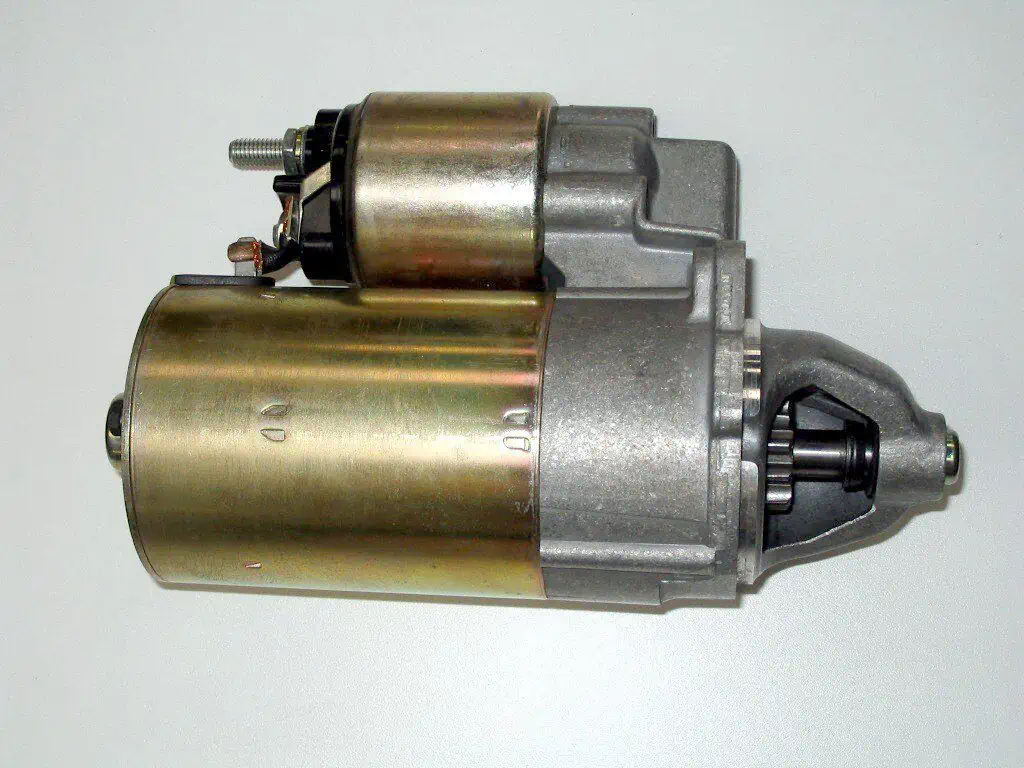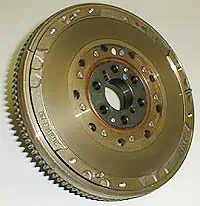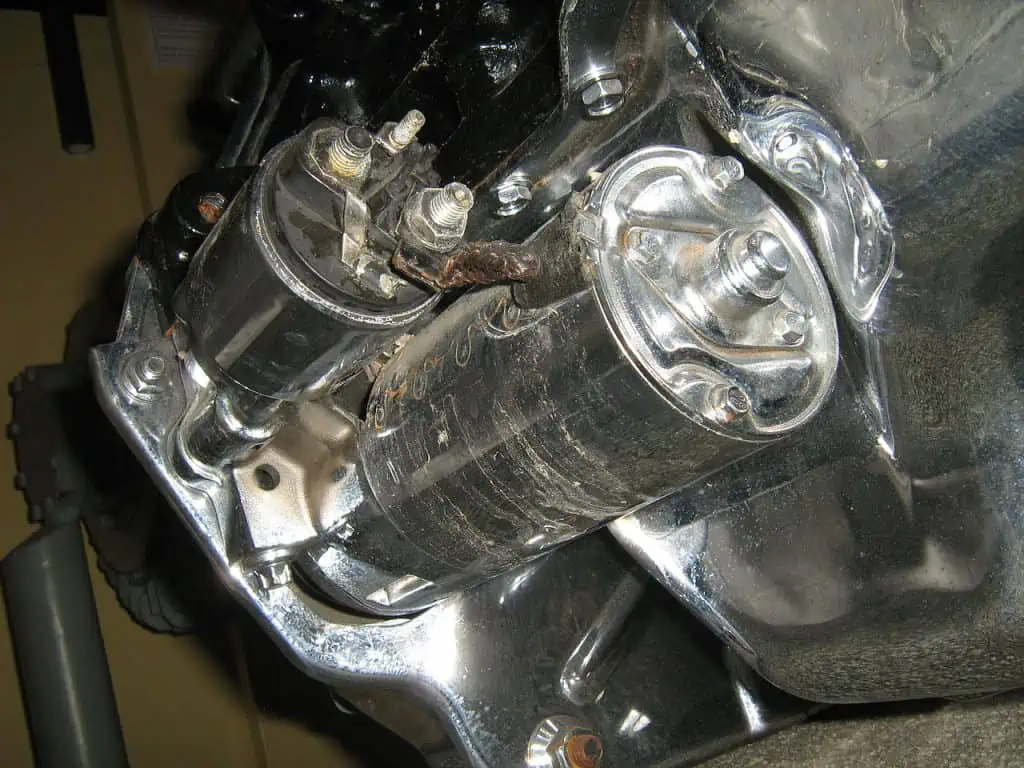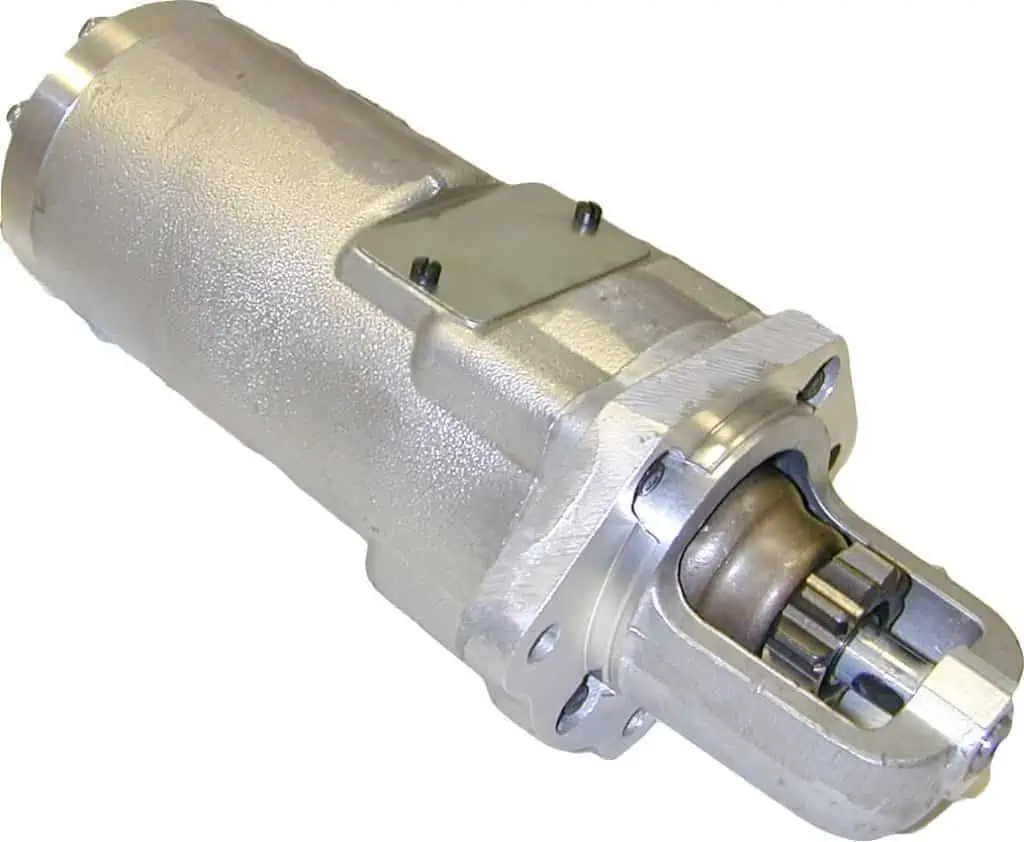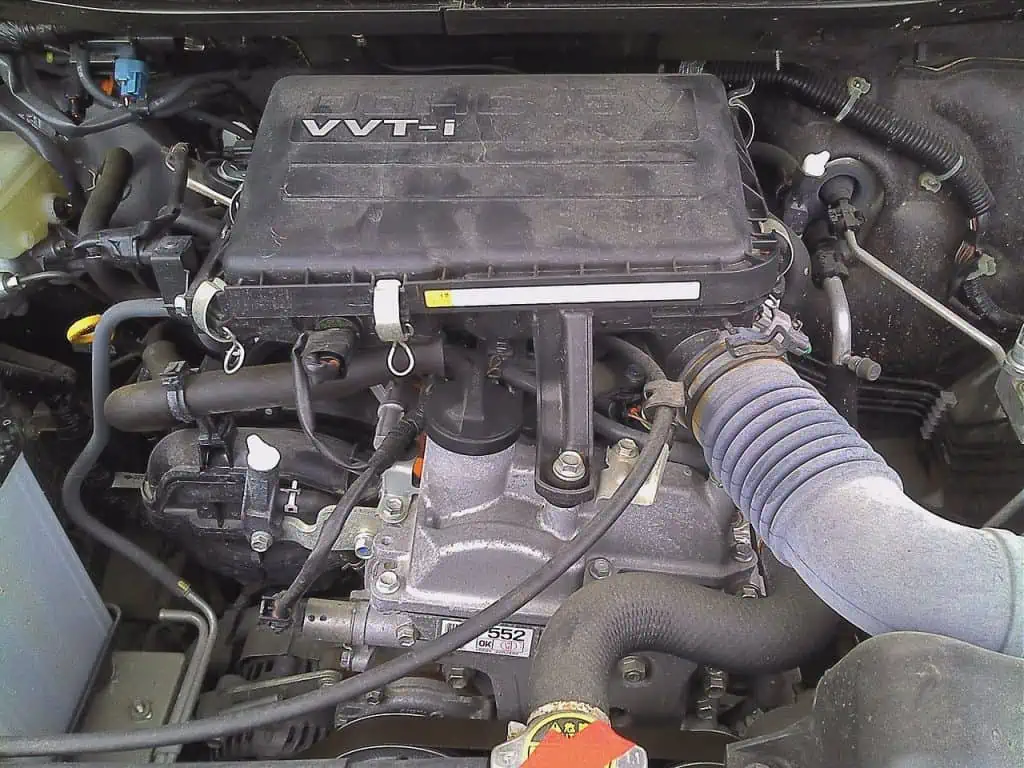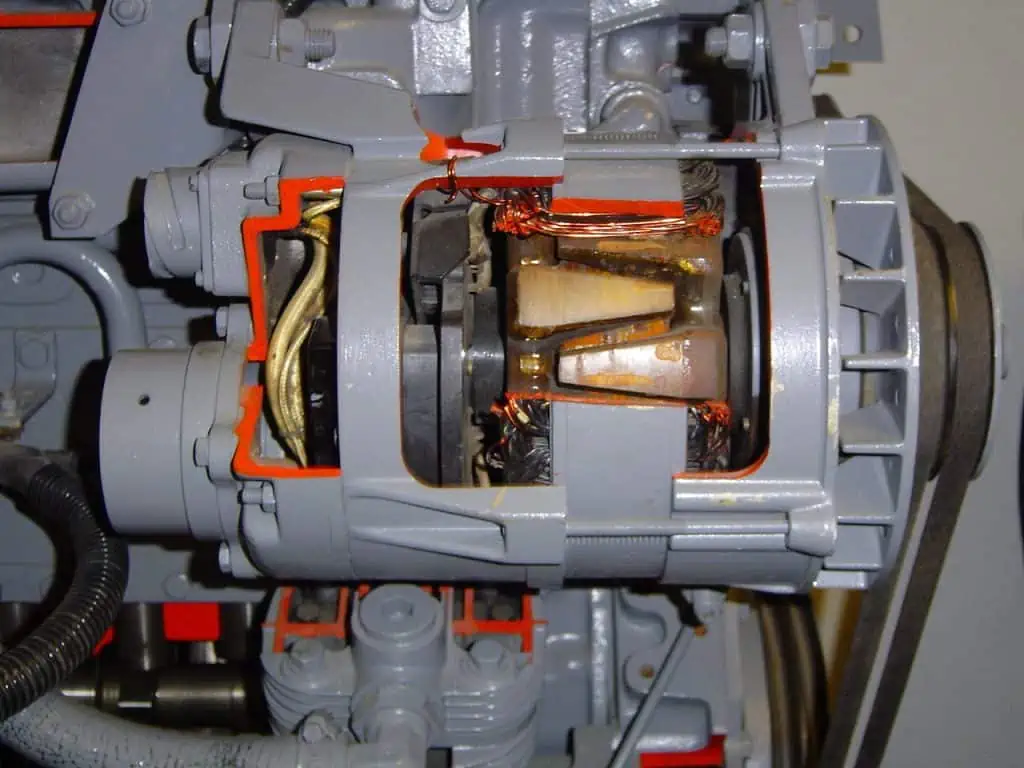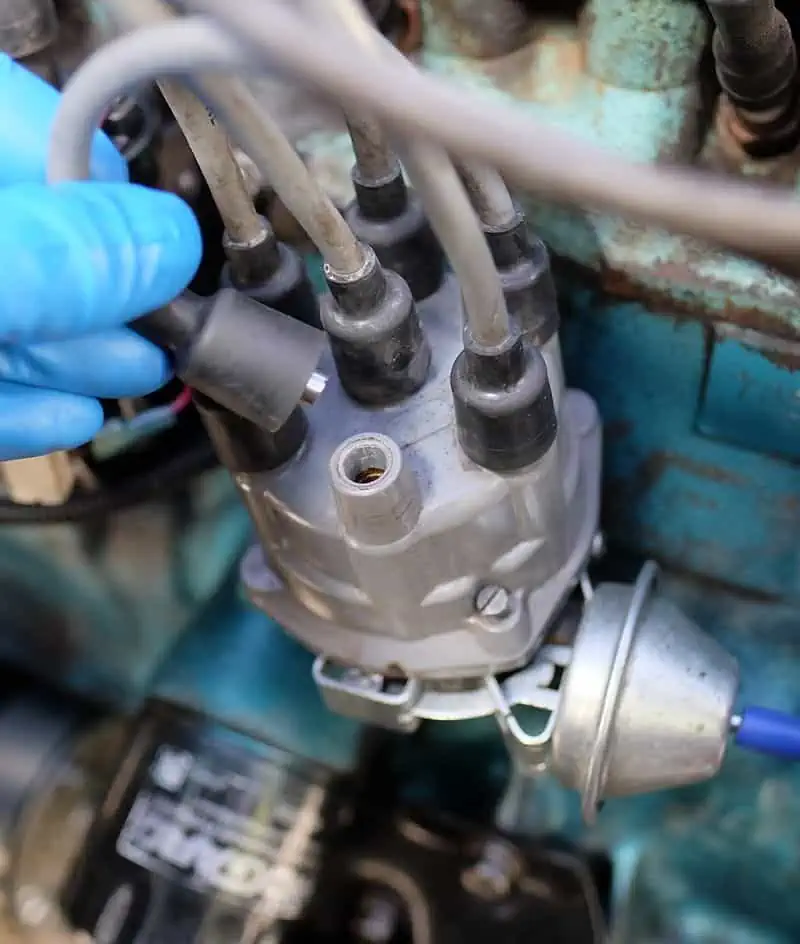It would be a major nuisance if your car wouldn’t start in the morning because many of us depend on our cars to get where we need to go. Your automobile may not start in addition to the battery if the starter motor is malfunctioning.
How often have you wondered why your car won’t start while sitting down? Few things are more annoying than trying to start your car in the morning even if you parked it properly the last time you used it.
A defective alternator, a dead battery, or a broken starter are the three most common issues with a dead car. Together, these auto parts supply the automobile with the electrical power it needs to start, run, and run electrical features like wipers, power windows, and sound systems.
An arm could be broken by the hand crank used to start motors in the past. To accomplish this, automobile starters were eventually created. There are several different types of starters available today, but all defective starters exhibit the same signs of a bad starter.
To correctly identify and diagnose the car with a starter problem, you must study the signs of a bad starter. Here, we’ll look at the warning signals that a car starter is failing, potential starter damage sources, and solutions for fixing a car with a damaged starter.
A Car Starter: What Is It and How Does It Work?
By applying torque, a car starter rotates or cranks your engine. A solenoid coupled to an electric starter draws electricity from the battery to power the motor that cranks the engine.
The starting motor starts your engine when you turn the ignition key by drawing electricity, engaging the flywheel, and turning the engine. This starts the process by which your engine ingests gasoline and air into the cylinders.
The air and fuel are then compressed inside the cylinder by the engine to prepare them for combustion, which ignites the fuel and air mixture.
An automobile starter motor (larger cylinder) and the starter solenoid (above it) by Willdre / CC BY-SA 3.0. If your car is brand new, the starter motor won’t need to be replaced for at least 100,000 to 150,000 kilometers. However, it doesn’t hurt to keep an eye out for the warning indications of a damaged starter so you can spot issues with the motor early on.
Your engine won’t require the starter motor after combustion has begun because it will run on its own. Starter motors come in three different categories: electric, hydraulic, and pneumatic.
In contrast to bigger engines like gas turbines, diesel-powered trucks, and generators, most cars use an electric starter motor, whereas hydraulic and pneumatic starters are frequently used with smaller engines like motorcycles.
Where Can You Find the Starter In a Car?
Having someone else sit in your car can help you locate the starter more quickly. and putting the ignition key in the ON position. The starter motor should turn on as a result.
Then, as the key is turned in the ignition, lift the hood and look for the cause of the clicking sounds coming from the starter. Those noises ought to originate from a sizable cylindrical component fastened close to the engine.
The starter is this metal cylinder. The engine compartment on the driver’s side of some vehicles may include the starter. A few fasteners that keep the starter firmly mounted in place should be included with it.
Why Does the Car Starter Fail?
Starters can stop working for a variety of reasons, including pinion breakage, electrical component failure, or internal gears if the starting is a gear-reduction type. A starter should typically last for a very long time. It’s unusual to replace the starter on a car with a few miles on it.
1. Worn-Out Ring Gear or Pinion Gear
It’s possible that the pinion gear won’t mesh well with the ring gear and won’t spin the flywheel quickly enough to start the engine if it has worn or broken teeth. This issue could also be brought on by the ring gear’s worn or damaged teeth.
2. Internal Electrical Components That are Overheated or Faulty
The starter can only run for a short time since the electrical components within are not heat-resistant to keep the starter small.
The brushes that transport current to the starting’s armature or wiring can become overly hot if the engine is started for an extended period (possibly because you read somewhere that you can move the car with the starter). The same is true if the starter isn’t given time to rest before being started again.
If this happens, the armature might not spin quickly enough to start the engine.
Additionally, the electrical parts may only degrade with time. This is particularly prevalent with vehicles like delivery vehicles that are regularly turned off and resumed.
3. The Engine Kickback
The engine may kick back due to issues with the ignition timing. Kickback can harm the starter, just as it did with the ancient hand-cranked autos when it injured humans.
Starter ring gear on its flywheel by Adrianyuki. If the pinion gear has worn or broken teeth, it may not mesh properly with the ring gear and may not spin the flywheel quickly enough to start the engine. The ring gear’s worn or broken teeth may also be the root of this problem.
What are Some of the Usual Signs of a Bad Starter?
A starter motor normally lasts between 100,000 and 150,000 miles, so if your automobile is brand new, it won’t break down anytime soon. It doesn’t hurt to keep an eye out for the signs of a bad starter, though, so you can detect problems with the motor before they become serious.
By doing this, you can swap it out before it breaks, preventing an awkward car start.
1. Grinding Sounds
If there is a problem with the pinion gear in the starting, this is one of the typical signs of a bad starter. The starting motor includes a pinion gear that meshes with your engine’s flywheel to start the engine. The gear may make a grinding sound if it is worn out or not engaging properly.
It sounds a lot like the grinding sound you would make if you accidentally turned the key again while the car was running. Keep in mind that doing this could harm the starter motor, so we don’t advise doing it just to hear what it sounds like.
You should take your automobile in for repairs if you constantly hear this grinding sound when you start it. Your engine and flywheel risk further harm if you don’t correct it.
2. The Signs of Freewheeling
If there is a problem with the pinion gear, freewheeling is another typical “sign of a bad starter.” This occurs when the starter motor’s pinion gear improperly engages with the flywheel.
As a result, all you will hear as your starter motor spins is a whining sound. This prevents the electric motor from engaging with the flywheel of your engine, which results in your automobile not cranking at all.
3. After the Engine Starts, the Starter Stays On
As is common knowledge, after the engine is running, the key should be removed from the “Start” position. The starter motor will then lose power and turn off as a result.
However, if your starter motor continues to operate on its own, you probably have a solenoid problem. As if you were still starting the automobile, the solenoid in this instance is welded shut in the closed position and continues to operate your starter motor.
You should immediately turn off your car if this occurs. The starting motor and flywheel in your engine will suffer severe harm if you leave your automobile running.
4. Difficulty Starting the Car
If your engine cranks but won’t start properly, you may have other problems, which are frequently ignition system-related. But if you try to start your car, but the engine won’t crank, and then you try again, and it starts, you probably have a starter relay issue.
The starting relay functions as a switch that turns the starter motor on and off. The starter motor system receives electricity when the ignition key is turned on.
The relay won’t transmit that signal if it is destroyed, which will prevent your automobile from starting at all. When you turn the key, you could occasionally hear clicking sounds if your relay is faulty.
A typical electric starter is installed at the rear of an automobile engine by CZmarlin. Starters can stop functioning for several causes, such as internal gears if the beginning is a gear-reduction type, pinion breakage, or electrical component failure. Typically, a starter should endure a very long time. It’s uncommon to replace the starter on a car that hasn’t been driven very far.
5. Thick Smoke Emanating from the Exhaust
This is one of the signs of a bad starter that is less frequent, although it can nonetheless occur. Your starter motor has overheated if smoke is flowing from it. It’s typically a sign of excessive power consumption through the electrical supply, which is frequently an issue with the electrical connections.
It can also occur if the starter has been running for an excessive amount of time, however, this normally only occurs after numerous unsuccessful attempts to start the automobile have caused the motor to become overheated.
Anytime smoke emanates from your engine, it’s never a good indication, and you should let your car idle for a while before towing it to the nearest repair facility.
6. Starter Drenched In Oil
When you see any of the aforementioned signs of a bad starter when you have a starter, bad battery, or alternator problem, your first inclination is to open the hood and investigate.
Don’t try to start the car again if you inspect it and discover that the starter is covered in oil. Your starter probably stopped working as a result of an oil leak from a ruptured pipe or hose. Before taking any further action, locate the leak’s source and fix it.
What are the Other Possible Reasons Why the Vehicle Won’t Start?
Now that you are aware of the signs of a bad starter, what should you do if your automobile won’t start for no apparent reason? A flat battery is typically the root of a car that won’t start.
Your automobile might not start for still another cause, though. Learn the signs of a bad starter to determine why your car won’t start before learning how to test a beginning motor.
1. A Flat Battery
You will probably notice the following symptoms if your car won’t start due to a flat battery:
- As you attempt to start the car, you hear a low whining or clicking sound.
- The starter motor isn’t receiving enough power from the battery if your engine hardly cranks or turns at all.
- The dashboard lights may not turn on and other electrical parts of the car may not function if your battery is very old and entirely dead.
If so, all you need to do is jumpstart your vehicle, and you’ll be on your way to the closest auto shop to acquire a new battery.
2. A Malfunctioning Alternator
The electrical generator known as an alternator transforms mechanical energy into electrical energy. In plainer terms, it converts the engine’s energy into electricity and then transfers it to the batteries of your car. Since they are not necessary for starting a car, one with a damaged alternator can frequently still start the engine.
However, a malfunctioning alternator prevents it from supplying the battery with the required amount of electricity. Your car will therefore be using more energy than it is producing. As a result, your battery will discharge significantly more quickly because it isn’t receiving enough current.
A CMA Hydraulic Automobile Starter by Brandon1975 / CC BY-SA 3.0. Smoke emanating from your starter motor indicates an overheated motor. It’s usually an indication of high electrical supply power consumption, which is generally a problem with the electrical connections.
If the car starts, but then dies and won’t start again, you probably have an alternator problem. As you try to start the automobile, you might also notice that your dashboard lights and headlights are flickering.
Try jumpstarting the automobile to start it if you believe you have a bad alternator. Once it is on, shut off all electrical devices, including the radio, the air conditioner, and the headlights. Your car will use less battery power as a result of doing this, and it should have enough to allow you to drive it to the closest repair facility.
You should only do this on a clear day since you won’t be able to activate your headlights or wipers. It’s hazardous, but you might avoid having to pay for a towing service.
3. A Malfunctioning Starter Motor
Typically, a damaged starter motor won’t allow a car to crank or turn at all. The electric parts of your car will frequently click, but when you turn the key, the engine won’t start.
Other times, as described in the section titled signs of a bad starter, you will hear either a grinding noise or the whining sounds of a freewheeling starter motor if there is a problem with the pinion gear.
4. Ignition Issues or Other Engine Issues
Several issues with the engine itself, most frequently the ignition system, could cause your automobile to not start. These are the typical symptoms:
- Your automobile starts right up, but it won’t start and run on its own.
- Every electric component is in good operating order.
You may have ignition issues if you notice the preceding symptoms. Defective ignition coils or spark plugs may be at blame for this.
When one or both of them malfunctions, your ignition system won’t be able to generate enough spark for your engine to ignite the gasoline and air combination inside your cylinders and initiate combustion. Your automobile won’t start without the ignition, even though your engine can crank.
These symptoms may also point to a fuel supply issue for your vehicle. There is a problem with the gasoline system in this instance. An unreliable air intake system and a blown head gasket are further potential causes.
Regardless of the reason, if your car cranks perfectly but still won’t start, you have a problem with the engine, not the starter motor system.
How Can You Diagnose the Signs of a Bad Start?
The following actions can be taken to test the starter motor if you’re noticing signs of a bad starter and you believe it is the starter motor that is preventing your car from starting.
To test the starter and battery, you will need a voltmeter, which you can get for about $45. If you don’t feel like spending the money, you can also borrow it from a friend.
1. Find the Starter Motor and the Solenoid
The starter and the solenoid in the engine bay must first be located:
A typical car engine by Yones / CC BY-SA 3.0. If your engine turns over but won’t start right, you can have other issues, many of which are ignition system-related. However, you most likely have a starter relay problem if you try to start your car but the engine won’t crank, then you try again, and it starts.
- Open the hood of your car.
- The starter is often located deep down at the back of your engine. It frequently rests where your engine and transmission interface.
- The majority of starter motors are made of a long cylinder with a smaller cylinder resting on top or to one side. The starting solenoid is housed in this smaller cylinder.
- On one side of the solenoid cylinder, you will notice two distinct terminals protruding from the cylinder. The higher terminal is commonly connected to a battery from your car’s battery.
2. Hear for Any Clicking Noises
Ask someone else to start the engine after you’ve located the starter motor so you can listen to it and diagnose the problem. Depending on the clicking sounds your car is making, decide what to do next:
If a Repeated Click Is Heard
Your starter motor is most likely operating properly if you hear it click repeatedly. The solenoid is moving electricity, as shown by the clicking sound, but not enough to start the engine. The system will repeatedly click as it tries to crank the engine when it isn’t receiving enough electricity.
The next step in this scenario is to use a voltmeter to check the battery’s charge level. If your battery doesn’t have between 12.4 and 12.9 volts, your car’s battery is the cause of the issue.
In this scenario, you can use jumper cables to jumpstart the vehicle, but a new battery will still be required before the vehicle will start again.
If Only a Single Click Is Heard or Nothing At All
The solenoid may still function properly even if there is only one click or none at all, but the battery may not be strong enough to even power the solenoid.
Make sure to verify that your battery is fully charged; if it is, your starter solenoid is likely malfunctioning. In this situation, you can examine the starter solenoid by measuring the current resistance as follows:
3. Evaluating the Start Solenoid
To prevent injuries, make sure to avoid any moving engine parts and operate in a dry atmosphere before performing this, or any of the instructions above. Now, here’s how to test the current resistance if you think your starter solenoid is damaged:
- The lower terminal of the solenoid should receive the positive lead from the voltmeter. Next, connect the lower terminal with the negative lead.
- Have someone else turn the ignition key while you complete the first step. To achieve an accurate reading, make sure the leads are tightly contacting or fastened to the solenoid’s terminals.
- Keep an eye on the voltage drop displayed by the voltmeter; you need to observe a drop of 0.5 volts.
The internal components of an automotive alternator by Piero / CC BY-SA 3.0. You most likely have an alternator issue if the car starts, but then dies and won’t start again. You might also notice that your dashboard lights and headlights are flickering while you try to start the car.
There is a problem with the solenoid if the decrease is smaller than 0.5 volts. A connection issue, such as a crimped line from the battery to the solenoid, may exist if the drop is greater than 0.5 volts.
It might be difficult and dangerous to carry out these examinations. You can simply take the car to a repair shop and allow a professional to make the diagnosis if you’re unsure of your abilities.
Is It Possible to Jump-Start a Vehicle That Has a Bad Starter?
It is possible to jumpstart a car with a bad starter, however, it is more difficult than simply getting into one with a dead battery. You can try a few different approaches, and although they may seem strange, they might just be effective.
This can be quite helpful if all you need to do is start the automobile and drive it without the aid of a tow truck to the repair facility. You should first examine your car for the following items:
- Ensure that the wires in your car’s electrical connection are in good condition and that nothing is loose by checking it. A battery or starter connection that is too loosely connected may not be able to supply enough power to start the car. Your starter motor may potentially be impacted by a damaged cable.
- Check your battery connections for corrosion. If you notice corrosion, you can use baking soda to clean them. Pour a few teaspoons of water, then sprinkle baking soda over the connection until it is completely covered. The terminals should then be cleaned with a hard brush. To finish, clean them with water and make sure they are totally dry.
Here are some techniques for jumpstarting a vehicle with a damaged starter motor after examining the items mentioned above:
1. Tap the Starter with a Hammer
Use a hammer to figuratively tap the starting. It’s possible that the starter motor has reached a dead spot and isn’t operating. If so, hammering on the exterior casing can cause it to start working again.
Any metal object will do; a hammer is not necessary. You can also tap your starter motor with a long pry bar if it’s hard to get to. Just keep in mind that a gentle touch should do the trick; there’s no need to use excessive power.
2. Skip the Relay
If the starter motor isn’t receiving enough electricity, your automobile might not start. If so, you can make an electrical connection by using a screwdriver.
Touch the positive starter terminal and the starter solenoid terminal with the screwdriver. If the initial problem was a relay issue, this will work around the starting relay and occasionally allow the car to start.
3. Push the Car to Start
Push starting the automobile is the only option left if you have a manual transmission and all else fails. You should ideally have a few people push your automobile while you sit inside and drive it. Put your automobile in first or second gear and maintain clutch pressure while being pushed to do this.
An automotive ignition system by Dennis Bratland / CC BY-SA 4.0. Your car might not start due to several difficulties with the engine itself, most usually the ignition system.
Release the clutch once you’ve accelerated to 5 to 10 mph. Your engine should turn as a result, hopefully starting to run. Once you’ve attempted this a few times without success, we advise stopping and towing your vehicle to a repair facility to have it fixed.
Remember that none of the aforementioned techniques are long-term fixes. Even if you can get the car to start, we advise going to a shop right away to have the issue repaired or replaced if needed.
How Much Does It Cost to Replace a Bad Starter?
Okay, you now understand what constitutes a “bad starter” and how to identify it. What about the price of replacement, though? The price to replace a car’s starter motor will vary based on the brand and model of your vehicle.
A starter motor kit for the majority of autos will run you anywhere from $180 to $300, not including labor. Naturally, the price will be more if you drive a luxury or exotic vehicle.
For instance, the cost of a starter motor kit for several Mercedes-Benz models ranges from $400 to $800. In terms of labor costs, they typically range from $50 to $100 per hour.
Remember that these are only approximations and only apply to your starter motor. If your flywheel is damaged, more repairs may be necessary, increasing costs.
Depending on the type and model of your car, this might raise the total cost of your repairs to about $1500. Because they may harm your flywheel, grinding sounds that you hear when starting the automobile should not be disregarded.
The Conclusion
Your engine is started by cranking the starter motor. Your engine is started using power from your battery, and once combustion has begun, it will run independently. Your automobile won’t start if the starter motor isn’t functioning.
You should be able to determine if your starter motor is failing by becoming familiar with the signs of a bad starter. If necessary, you should change or fix your starter motor to avoid having to deal with a car that won’t start.
Check that as well if you notice a whining or grinding sound when you start the car. A grinding sound is never a good sign and may result in additional, more costly damage.
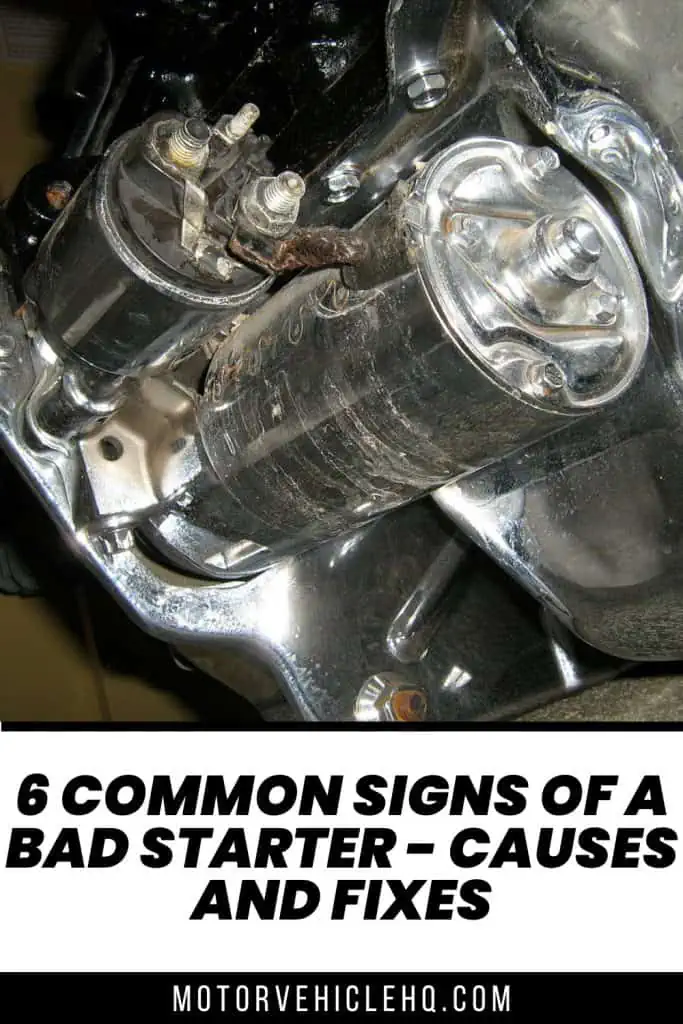
A typical electric starter installed at the rear of an automobile engine by CZmarlin

Jim Wicks is the founder of MotorVehicleHQ. With over two decades of experience in the automotive industry and a degree in Automotive Technology, Jim is a certified car expert who has worked in various roles ranging from a mechanic, car dealership manager, to a racing car driver. He has owned more than 20 cars over the past 15 years. Ask him about any vehicle you see on the road and he can tell you the make, model and year. He loves the aesthetics of all things cars, and keeps his vehicles in pristine condition.
In his free time, Jim enjoys getting his hands dirty under the hood of a classic car or taking long drives along the country roads. His favorite car? A 1967 Shelby GT500, a true classic that, according to Jim, “represents the pure essence of American muscle.”
